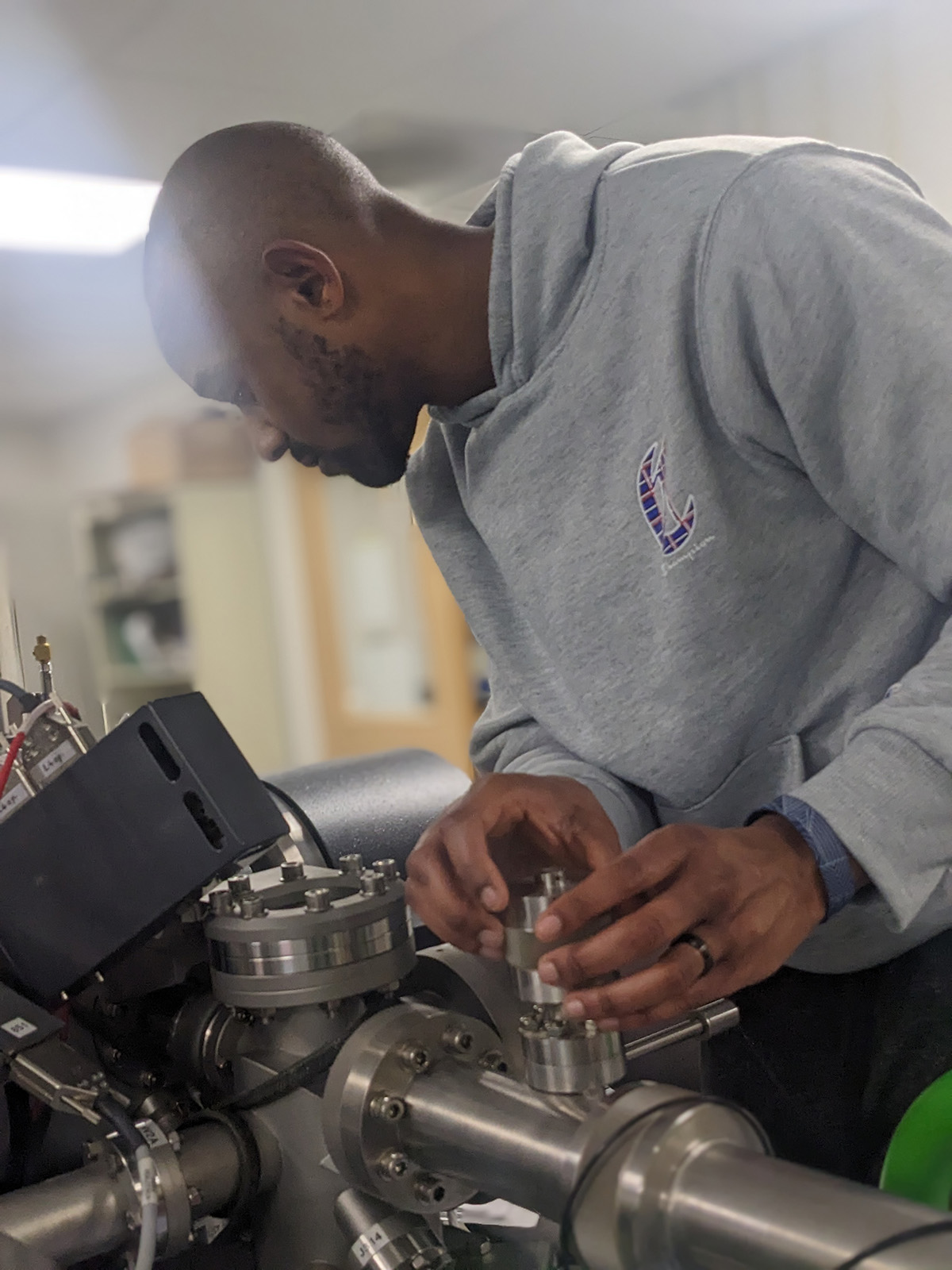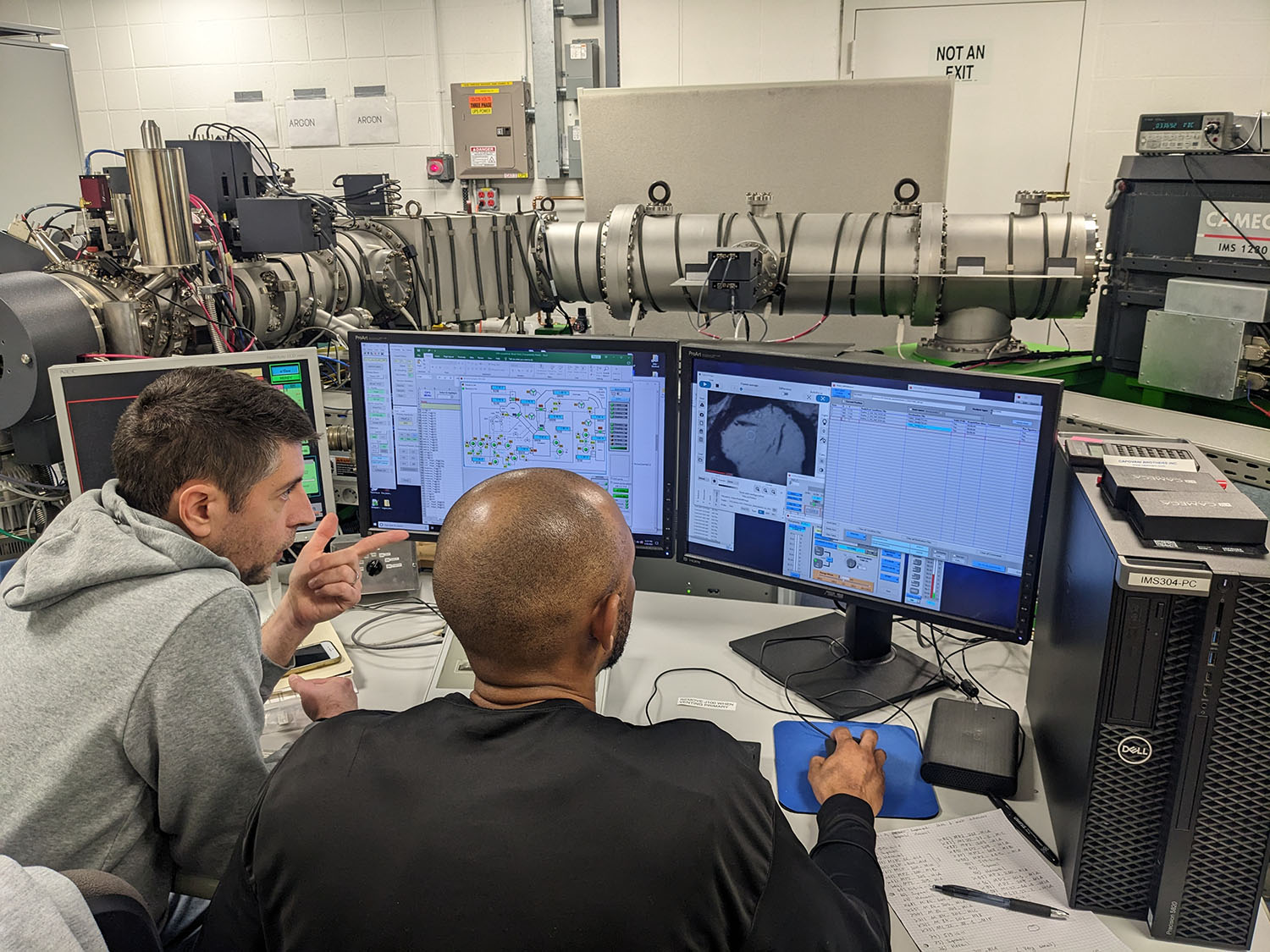Sealed Apollo 17 samples analyzed with new techniques reveal that the Moon's interior contains sulfur isotopes unlike those found on Earth, according to research led by a Brown University scientist.
PROVIDENCE, R.I. [Brown University] - When astronauts returned from NASA's final Apollo Moon mission in 1972, some of the samples they collected were sealed and carefully stored away in the hope that future researchers using advanced equipment might analyze them and make new discoveries.
Now, a research team led by a Brown University professor has done just that. In a study published in JGR: Planets, researchers report a sulfuric surprise in rock samples taken from the Moon's Taurus Littrow region during Apollo 17. The analysis shows that volcanic material in the sample contains sulfur compounds that are highly depleted of sulfur-33 (or 33S), one of four radioactively stable sulfur isotopes. The depleted 33S samples contrast sharply with sulfur isotope ratios found on Earth, the researchers say.

Certain elements carry distinctive "fingerprints" in the form of isotope ratios - subtle variations in the weight of their atoms. If two rocks share the same isotopic fingerprint, it's a strong clue they came from the same source. In the case of the Moon and Earth, researchers have shown broad similarities in the two bodies' oxygen isotopes. It has long been assumed that sulfur isotopes would tell a similar story, according to James Dottin, an assistant professor of Earth, environmental and planetary sciences at Brown who led the new study.
"Before this, it was thought that the lunar mantle had the same sulfur isotope composition as Earth," Dottin said. "That's what I expected to see when analyzing these samples, but instead we saw values that are very different from anything we find on Earth."
The samples Dottin analyzed were taken from a double drive tube - a hollow metal cylinder driven some 60 centimeters into the lunar soil by Apollo 17 astronauts Gene Cernan and Harrison Schmitt. Once returned to Earth, NASA sealed the tube in a helium chamber to keep the sample in pristine condition for future research under a program called Apollo Next Generation Sample Analysis or ANGSA.
In the last few years, NASA has begun making the ANGSA samples available to academic researchers through a competitive application process. Supported by LunaSCOPE, Brown's lunar science research consortium, Dottin proposed to analyze sulfur isotopes using secondary ion mass spectrometry, a highly precise method of isotope analysis that didn't exist in 1972 when the samples were first returned to Earth.
For his work, Dottin sought specific samples from the drive tube that appeared to be mantle-derived volcanic rock: "I was targeting sulfur that had a texture that would suggest it was erupted with the rock and not added through a different process," he said.
He was a bit stunned to see isotope ratios that varied so dramatically from those on Earth.
"My first thought was, 'Holy shmolies, that can't be right,'" Dottin said. "So we went back to make sure we had done everything properly and we had. These are just very surprising results."

There are two potential explanations for the anomalous sulfur, he says.
They could be a remnant of chemical processes that took place on the Moon early in its history. Depleted S33 ratios are found when sulfur interacts with ultraviolet light in an optically thin atmosphere. The Moon is thought to have had a short-lived atmosphere early in its history, which could have supported that kind of photochemistry. If that is indeed how the samples were formed, it has some interesting implications for the evolution of the Moon.
"That would be evidence of ancient exchange of materials from the lunar surface to the mantle," Dottin said. "On Earth, we have plate tectonics that does that, but the Moon doesn't have plate tectonics. So this idea of some kind of exchange mechanism on the early Moon is exciting."
The other possibility is that anomalous sulfur is left over from the formation of the Moon itself. The leading explanation for the Moon's formation is that a Mars-sized object, called Theia, collided with Earth early in its history. Debris from that collision eventually coalesced to form the Moon. It's possible that Theia's sulfur signature was far different from that of Earth, and that those differences have been recorded in the lunar mantle.
It's not clear from this research which of those possible explanations is the right one. Dottin is hopeful that more study of sulfur isotopes from Mars and other bodies may one day help scientists find the answer. Ultimately, he says, understanding the distribution of isotope signatures will help scientists better understand how the solar system formed.






